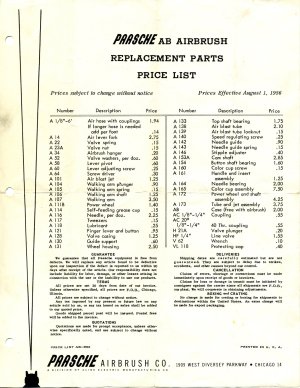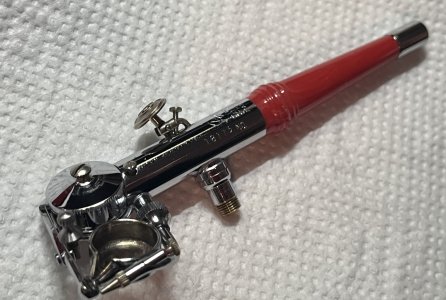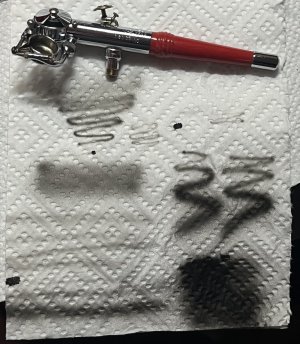Proxin
Double Actioner
Oh boy, what have I gotten myself into with this one…
I saw one online for a steal and I just couldn’t help myself. Shes been beaten and abused and will need a lot of work, but I just had to see what all the hype for this unique little brush was all about.
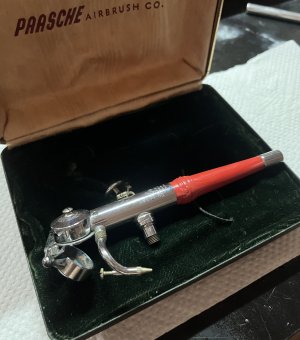

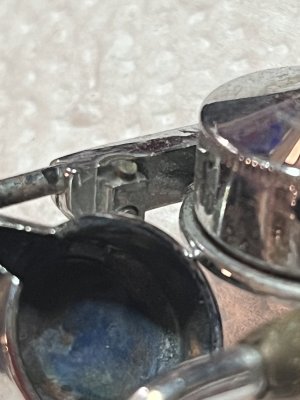
Judging by the case and handle I would guess it’s from around the 60s, but I can’t be certain. Almost every part of this airbrush is gunked up, and it’s missing quite a few parts. I have to give props to Paasche though, as they still sell nearly every part for this airbrush on their website. You can see in the pictures that the airspeed regulator screw has been broken off inside the thread, so that’ll be fun to remove.
One thing I didn't notice until it arrived is the needle guide post has also broken off. I thought I was gonna be SOL since it’s permanently attached to the body and I couldn’t find the part at first, but after some research I was also able to find it available on Paasche’s site. The item number is ”A-130 GUIDE POST”, so I’ve ordered that as well. Now I need to figure out how I’m gonna get the old one off. Looks like it’s either soldered or welded on. Any suggestions?
I was able to take most of it apart:
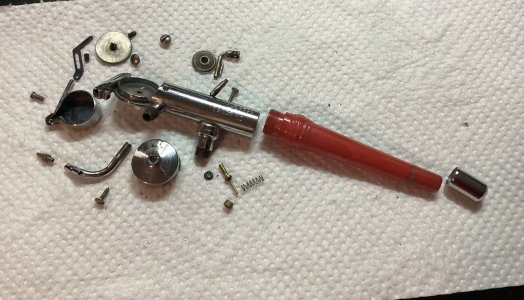
I couldn’t get the walking arm plunger or lever out, I think the air valve assembly needs to come out first and it doesn’t want to budge at the moment. I know that for this thing to work properly it has to be perfectly clean and properly lubricated, inside and out. so I’m gonna spend the next couple of days just getting everything as clean as possible, Hopefully it can be saved!
I saw one online for a steal and I just couldn’t help myself. Shes been beaten and abused and will need a lot of work, but I just had to see what all the hype for this unique little brush was all about.



Judging by the case and handle I would guess it’s from around the 60s, but I can’t be certain. Almost every part of this airbrush is gunked up, and it’s missing quite a few parts. I have to give props to Paasche though, as they still sell nearly every part for this airbrush on their website. You can see in the pictures that the airspeed regulator screw has been broken off inside the thread, so that’ll be fun to remove.
One thing I didn't notice until it arrived is the needle guide post has also broken off. I thought I was gonna be SOL since it’s permanently attached to the body and I couldn’t find the part at first, but after some research I was also able to find it available on Paasche’s site. The item number is ”A-130 GUIDE POST”, so I’ve ordered that as well. Now I need to figure out how I’m gonna get the old one off. Looks like it’s either soldered or welded on. Any suggestions?
I was able to take most of it apart:

I couldn’t get the walking arm plunger or lever out, I think the air valve assembly needs to come out first and it doesn’t want to budge at the moment. I know that for this thing to work properly it has to be perfectly clean and properly lubricated, inside and out. so I’m gonna spend the next couple of days just getting everything as clean as possible, Hopefully it can be saved!

